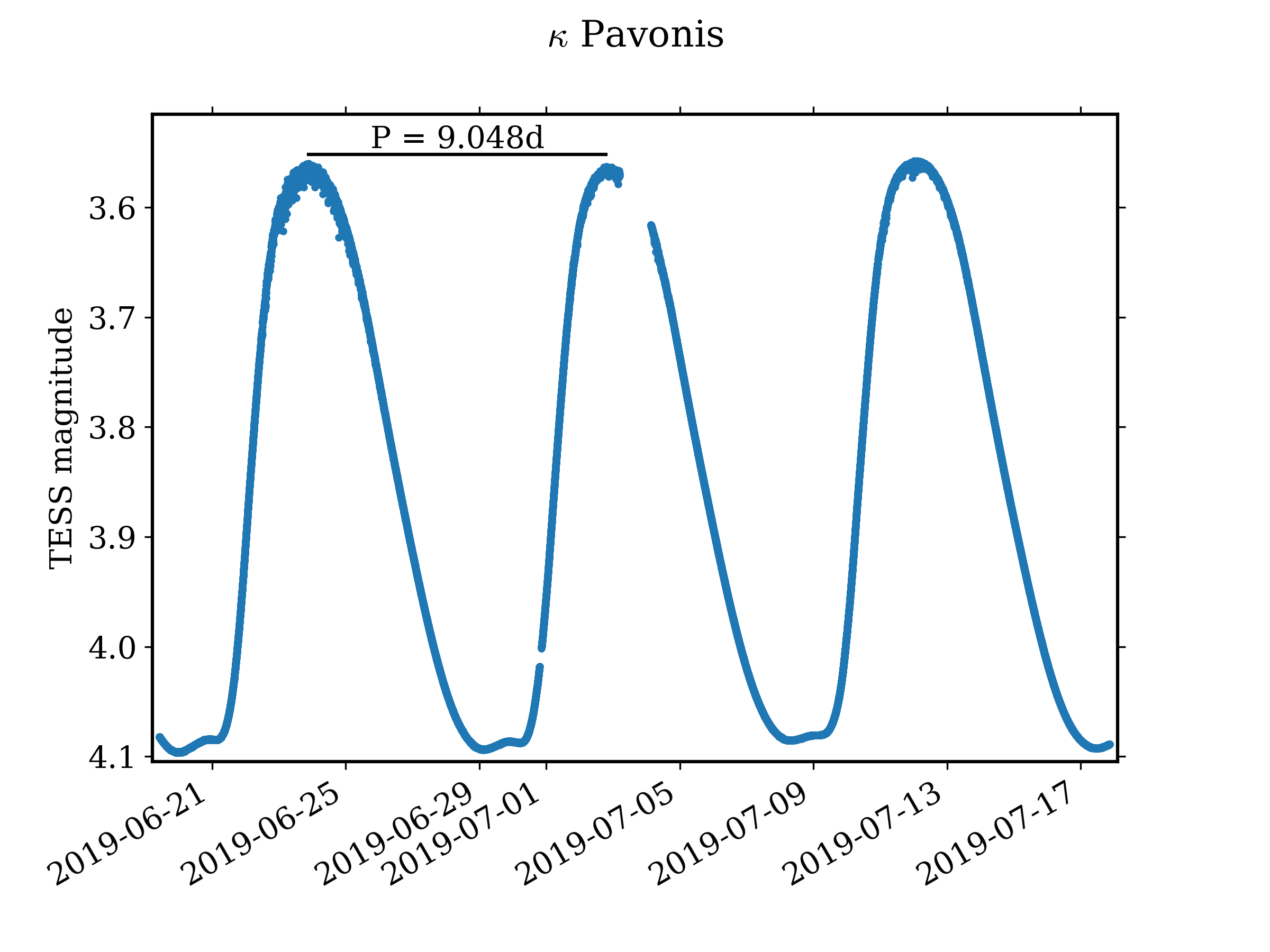Kappa Pavonis on:
[Wikipedia]
[Google]
[Amazon]
Kappa Pavonis (κ Pav) is a
 κ Pavonis ranges between
κ Pavonis ranges between
variable star
A variable star is a star whose brightness as seen from Earth (its apparent magnitude) changes with time. This variation may be caused by a change in emitted light or by something partly blocking the light, so variable stars are classified as e ...
in the constellation Pavo. It is the brightest W Virginis variable in the sky.
Discovery
In 1901, κ Pavonis was reported to be a variable star with a magnitude range of 3.8 to 5.2 with a period of 9.0908 days. Further observations revealed radial velocity variations in time with the brightness variations, but this was assumed to indicate a spectroscopic binary system. The brightness variations were then interpreted as eclipses. Less than 10 years later, was κ Pav was listed as a likely Cepheid variable. In 1937 it was used as part of the effort to calibrate the Cepheid distance scale. Only years later were the separate period luminosity relationships for population I and II Cepheid variables identified, and κ Pav was assigned to the type II group.Variability
 κ Pavonis ranges between
κ Pavonis ranges between apparent magnitude
Apparent magnitude () is a measure of the brightness of a star or other astronomical object observed from Earth. An object's apparent magnitude depends on its intrinsic luminosity, its distance from Earth, and any extinction of the object's ...
s 3.91 and 4.78, and spectral types F5 to G5, over a period of 9.1 days. It is a W Virginis variable, a type II Cepheid
Type II Cepheids are variable stars which pulsate with periods typically between 1 and 50 days. They are population II stars: old, typically metal-poor, low mass objects.
Like all Cepheid variables, Type IIs exhibit a relationship between the st ...
thought to be evolving along a blue loop
In the field of stellar evolution, a blue loop is a stage in the life of an evolved star where it changes from a cool star to a hotter one before cooling again. The name derives from the shape of the evolutionary track on a Hertzsprung–Russe ...
from the thermal pulsing asymptotic giant branch.
κ Pav shows sudden small changes in the period of its otherwise highly regular pulsations. The period has changed at times by as much as 16 minutes from its average of around 9 days and 2 hours. The star also is considered peculiar compared to other W Virginis stars such as W Virginis itself. A sub-group of W Virginis stars in the Large Magellanic Cloud have been discovered to be hotter and more luminous than expected and given a ''pW'' (peculiar W Virginis) classification. It is proposed that κ Pav should also be given a pW classification. The peculiarities in the LMC stars may be due to binary
Binary may refer to:
Science and technology Mathematics
* Binary number, a representation of numbers using only two digits (0 and 1)
* Binary function, a function that takes two arguments
* Binary operation, a mathematical operation that ta ...
interactions, although κ Pav is not known to be a binary star.
Properties
κ Pavonis is a large star several hundred times more luminous than the sun. Its spectral type varies as it pulsates, between F5 and G5 as the temperature changes, and the luminosity class changes from a bright giant to a supergiant. The luminosity class is relatively high for a star of this luminosity, due to the low surface gravity caused by a low mass pulsating star. The pulsations cause the star's radius to change by about above and below the mean size. The angular diameter of the disc has been directly observed to change during the pulsations.References
{{DEFAULTSORT:Kappa Pavonis Pavo (constellation) F-type supergiants Pavonis, Kappa W Virginis variables F-type bright giants 093015 7107 174694 Durchmusterung objects G-type bright giants G-type supergiants